Opinion
True benefits of Ceasefire with LTTE
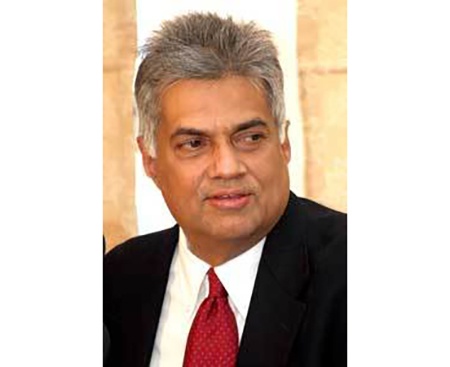
Former Prime Minister and UNP leader Ranil Wickremesinghe, testifying before the Presidential Commission of Inquiry investigating the Easter Sunday carnage, has rightly pointed out the many benefits the Sri Lankan government gained during the period of the Ceasefire Agreement (News, 7 Oct). In the preceding years, the LTTE were able to cause grievous damage to Sri Lanka with terrorist bombs in the south killing thousands of civilians and devastating the economy. In the year 1999/2000, economic growth was negative. The army was in such a poor state that in May 2000, the LTTE came close to capturing the whole Jaffna peninsula.
The signing of the CFA dramatically reversed the situation. The Sri Lankan economy enjoyed record economic growth and this enabled the government to massively rearm and retrain its armed forces. The size of the army more than doubled. The LTTE, however, suffered its most damaging split in 2004, when the government persuaded Karuna and his forces to join the government side. These were the factors which led to the Sri Lankan armed forces having one of their most impressive victories in the war, when the whole east was recaptured in a matter of weeks with very few casualties.
The results of the Sri Lanka Monitoring Mission (SLMM) showing that the LTTE were committing more than 95% of the ceasefire violations, persuaded the EU to join Britain and the US in banning the LTTE, considerably reducing its ability to collect funds abroad. US satellite data enabled the Sri Lankan Navy to destroy all the LTTE’s arms smuggling ships. Coupled with the loss of coastline in the east, there was a dramatic reduction in their ability to smuggle arms from abroad.
It is apparent that during the period of the CFA, Sri Lanka enjoyed a sustained period of economic growth and some of its most impressive military victories. The LTTE suffered, in contrast, its first major split, substantial loss of territory, considerable damage to its armed forces and ability to resupply weapons. This turnaround led to the final victory in the north.
Dr R P FERNANDO
UK
Opinion
Gnana Moonesinghe- an appreciation
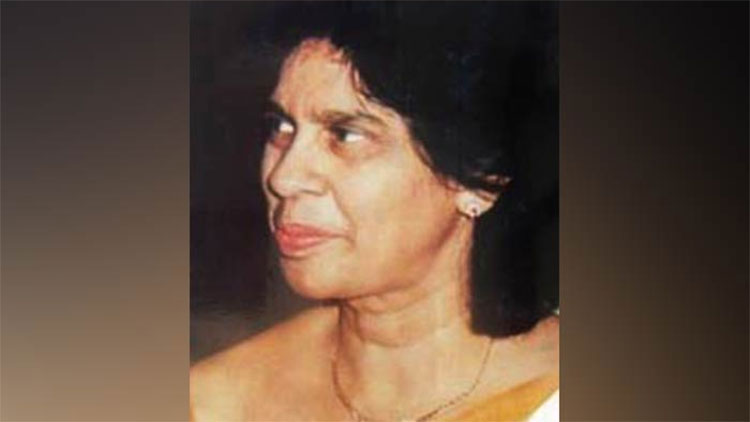
It was just over one month ago that Gnana Moonesinghe departed from this world after having lived a very fruitful life on this earth. It was indeed a privilege that Mallika and I came to know Gnana after we moved into Havelock City. During that short period, we became very close friends, along with another mutual friend of ours, Dr. Disampathy Subesinghe, who, too, was living in the same Tower after having come from the United Kingdom. Unfortunately, Dr. Subesinghe pre-deceased Gnana.
Gnana was a graduate of the University of Ceylon, Peradeniya having been at Peradeniya during the halcyon days of that University.
She tied the nuptial knot with Mangala Moonesinghe who was a very respected politician and who served as our High Commissioner in London and New Delhi. She was an exceptional hostess while being the wife of the High Commissioner. It was a very interesting coincidence that our second son, Anuke, had won a trip to New Delhi having won an All-Island essay competition about India while still a schoolboy. The team had met the High Commissioner and Gnana when they attended a reception hosted at the High Commission, where Gnana had been an exceptional hostess to the young boys.
Gnana was a member of many organisations and played an important role in all of them. In addition to these activities, she contributed to newspapers on varied subjects, especially relating to good governance and reconciliation. She was a keen player of scrabble and rummy with her friends and of course entertaining them to a meal if played at her home.
It was while in New Delhi that Gnana wrote and published a book titled “Thus have I heard…”in the year 2009 and she presented a copy to me). This book gives lucid descriptions of the Buddhist teachings of the Buddha and the places of interest in India with historical descriptions of what transpired in each place.
Gnana had brought up a very good daughter Avanthi and a son Sanath. She doted on her grandchildren and in turn they loved her. It was Avanthi and her husband, Murtaza who looked after Gnana during the last stages of her life.
We will miss Gana’s hospitality, soft spoken conversations, and the love that she used to emanate towards her friends.
HM NISSANKA WARAKAULLE
Opinion
Manifestos, promises and failures
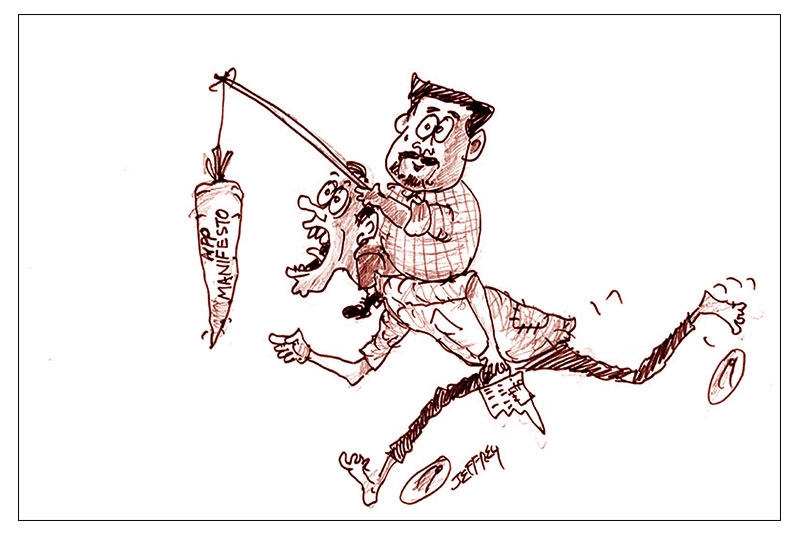
The current government’s spectacular electoral success, was in essence a clear rejection of the chaos, incompetence and corruption, that were hallmarks of the traditional parties that have exercised dominant electoral power since Independence in 1948.
The remarkably successful Aragalaya was an emphatic rejection of the ‘old’ parties and hopes of a refreshingly enlightened “System Change”. This was the unspoken reliance on the NPP, (a lightly disguised JVP).
The unsavoury history of the unimaginable and intolerable violence of the JVP, matched by an equally cruel retaliation by Government forces, thankfully faded out around the last decade of the 20th century, is still a feared eventuality, in the memories of those who experienced the nightmare. Maybe, most of the currently active youth, had not even been born at the time. But the fear lingers. It is not unusual that the current NPP leadership, is none too eager to remember that period of history, nor to market this ancestry.
The shift into oblivion of the LSSP, is perhaps a signal that the era of sloganeering and “catch phrases of Marxist verbiage” as electoral currency, is now past.
One hopes that a home-grown model, based on the rugged strengths of rural society, is much more marketable, and representative of the Swabasha nourished, youth leadership. The leader in this transformation, AKD stamps his class with remarkably effective oratorical skills. The ready recall of incidents and instances, to follow logical trends of thought, and the ease with which he changes style and substance, to suit his varied audiences, is simply brilliant. This, with not a note (or prompt) in support, nor an hour to craft his fresh delivery to a new audience. The massive crowds that attended the pre-election rallies, seem to have morphed significantly into votes. The 150-odd seats secured, would have surprised even the most committed supporters. However, can they “walk the talk” of electoral rhetoric?
It also seems that even the few of the Old Guard, possibly crippled by left wing ideology, have taken on a new stance, with emphasis on existing local reality.
The hopes of a majority, enthused by the change of attitudes, professionalism and integrity of the new dispensation, will endure and thrive. The early signs are positive, but this leopard may well change its spots.
The claim that the promised changes, especially of seizure of the proceeds of crime and lawful punishment of fraudsters, is demonstrably slow. There must however be much discomfort among these rogues, that the handcuffs to adorn their wrists, may not be too far away. The President assures the people that the seeming delay, was to allow irrefutable and water-tight evidence to be assembled for successful prosecution, and to eliminate the all too frequent instances where the accused are acquitted and released.
It is increasingly evident that the roots of criminality run deep and far, and even the institutions designed to aid in successful probes, can be compromised by massive enticements, which would be easily accommodated, within the sheer size of the sums involved.
The trails may be clear to the optimistic, but the craftiness of seasoned rogues ensures that although the truth will eventually prevail, it may be a very deep dig. If the lack of “legal provision” is a real impediment, the present parliamentary majority should facilitate speedy correction. However, in many instances, it seems apparent that it is not the lack of laws, but the tardiness in acting where sufficient laws already exist is the problem.
To return to the matter of lying or otherwise distorting reality, there seems to be a kind of permissible and generous threshold, beneath which unreal extravagance can be concealed. If conscience overrides mere legality, and zero tolerance of fraud prevails, there will be public aversion towards any departures from common decency and rectitude.
Credit will be its reward, for the “Clean Sri Lanka” initiative if it goes beyond mere elimination of environmental pollutants and encompasses restoration of moral and ethical standards as well.
But, are we not presently guilty of a shallow pretense of religiosity, when our Constitution urges (or permits), the creation of Ministries of Buddhism and those charged with the “protection” of Christian, Muslim or Hindu affairs? This is hypocrisy of a high order especially in a country, wedded to concepts of equality, compassion and fairness in a pluralistic community. It is infinitely easier to preserve unity in a mixed populace, than to repair a fractured one. As one of our political leaders asserted, in a different context, “We have scrambled the egg and invite any to try “unscrambling it”.
As the late D. M. Jayaratne, as PM, as well as Minister of Buddha Sasana, saw no qualms about declaring that “Only idiots would believe Election manifestos, when their intent was merely to deceive voters into voting for them”. One has to trust that this still prevails. We remain undaunted, in a country that prides itself in a religiosity cemented within a constitution which permits such divisive content.
Dr Upatissa Pethiyagoda
Opinion
Learning from global models to address flooding and water shortage in Sri Lanka

by Sudharman Siripala
Sri Lanka is grappling with the increasing threat of climate change, which has led to unpredictable weather patterns. The country faces a dangerous combination of flooding in some regions and water shortages in others, a situation exacerbated by shifting rainfall patterns. Rivers originating in the Central Hills, such as the Mahaweli, Kalu, and Kelani, flow through much of the country, but these water sources are not being distributed evenly. Districts like Monaragala and Hambantota, located in the dry zone, are experiencing severe water shortages. To address this challenge, experts suggest the development of an interconnected river system to harness excess water during floods and redirect it to drier areas, ensuring a year-round water supply for agriculture and daily use.
Global Case Studies in River Management
Several countries facing similar water-related challenges have implemented successful water management systems that Sri Lanka could adapt to its unique circumstances:
The Netherlands – Room for the River Programme
The Netherlands, a country prone to flooding, widened its rivers and relocated dikes to create floodplains. This approach allows rivers to overflow without damaging urban areas, while preserving water flow and natural habitats. Sri Lanka could apply this concept by designating specific riverbank areas for temporary flood storage.
China – South-North Water Transfer Project
China’s massive project channels excess water from the flood-prone Yangtze River to drier northern regions. This system of canals and reservoirs could inspire Sri Lanka to divert water from rivers in the Central Hills to drier areas in the south and east.
Bangladesh – River Interlinking Projects
Bangladesh has implemented river interlinking projects to redistribute water from flood-prone rivers, such as the Brahmaputra, to drier regions. Sri Lanka could link its major rivers like the Mahaweli and Kelani to smaller rivers in water-scarce districts to balance water distribution.
India – National River Linking Project
India’s National River Linking Project connects major rivers to manage both floods and droughts. Sri Lanka could use similar strategies, connecting rivers around the 500-foot contour line in the Central Hills to help distribute water more effectively.
United States – Mississippi River and Tributaries Project
The Mississippi River system combines levees, floodways, and diversion channels to manage flooding. Sri Lanka could adopt similar flood-control measures in vulnerable river basins such as the Kelani and Kalu.
Japan – Underground Reservoirs and Flood Channels
Japan’s G-Cans Project in Tokyo channels excess water into underground reservoirs to prevent urban flooding. A similar underground system could be implemented in Colombo and other flood-prone cities in Sri Lanka.
Singapore – Marina Barrage
Singapore’s Marina Barrage serves as both a flood control measure and a water supply resource. Sri Lanka could develop similar systems to control flooding in urban areas and ensure water availability during dry spells.
Thailand – Chao Phraya River Basin Management
Thailand uses diversion channels in the Chao Phraya River Basin to prevent flooding in Bangkok and direct water to agricultural areas. Sri Lanka could replicate this by creating diversion channels to supply water to its agricultural zones.
Actionable Solutions for Sri Lanka
Develop an Interconnected River System
Establish water diversion channels along the 300-500 meter contour lines of the Central Hills to capture excess rainfall during floods and redirect it to drier areas.
Build Reservoirs and Storage Tanks
Construct reservoirs to store diverted water, ensuring a steady supply for agriculture and domestic use. Sri Lanka has around 14,000 ancient tanks out of 30,000 that could be revitalized for this purpose.
Improve Urban Flood Defenses
Drawing inspiration from Japan and Singapore, build underground reservoirs and flood channels in cities like Colombo to mitigate urban flooding.
Strengthen Watershed Management
Restore natural floodplains and create wetlands to absorb excess rainwater, as seen in the Netherlands, helping to reduce flood risks.
Encourage Public-Private Partnerships
Foster collaboration between the public and private sectors to fund large-scale water management infrastructure, leveraging models from China and the United States.
Leverage Technology
Utilise modern forecasting and real-time water management systems, similar to those in Bangladesh and Thailand, to monitor water levels and manage river flows dynamically.
International Collaboration
Form partnerships with countries that have successfully implemented flood control and water management systems to share expertise and technology.
Sri Lanka’s dual challenges of flooding and water scarcity, compounded by climate change, require immediate action. By developing an interconnected river system and learning from successful global water management models, Sri Lanka can mitigate the effects of floods while ensuring a sustainable water supply for agriculture and daily life. It is crucial for the country to act now, as these solutions have the potential to transform Sri Lanka’s water management system for the better.
Sudharman Siripala Managing Director of Geoinformatics Group and a Registered Licensed Surveyor, specializes in geo-spatial applications. He also serves as a freelance value chain consultant for Vivonta Green Tech Consultants (www.vivonta.lk)
-
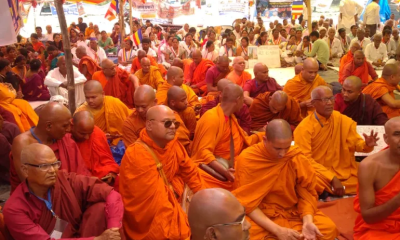
 Foreign News7 days ago
Foreign News7 days agoBuddhism’s holiest site erupts in protests over Hindu ‘control’ of shrine
-
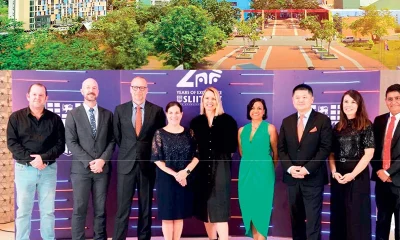
 Features5 days ago
Features5 days agoCelebrating 25 Years of Excellence: The Silver Jubilee of SLIIT – PART I
-
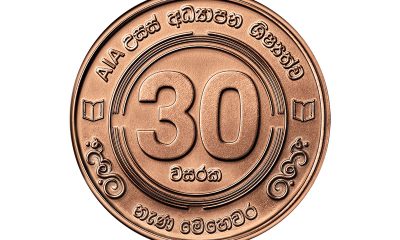
 Business3 days ago
Business3 days agoAIA Higher Education Scholarships Programme celebrating 30-year journey
-

 Business5 days ago
Business5 days agoCEB calls for proposals to develop two 50MW wind farm facilities in Mullikulam
-
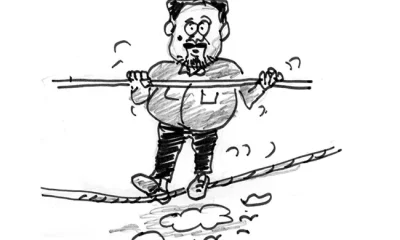
 Features5 days ago
Features5 days agoNotes from AKD’s Textbook
-
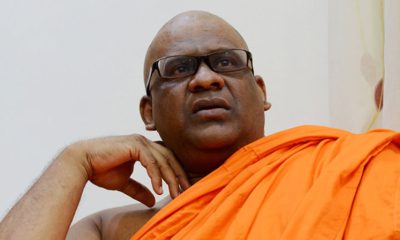
 News2 days ago
News2 days agoGnanasara Thera urged to reveal masterminds behind Easter Sunday terror attacks
-
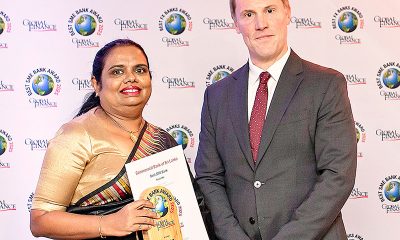
 News1 day ago
News1 day agoComBank crowned Global Finance Best SME Bank in Sri Lanka for 3rd successive year
-

 Sports1 day ago
Sports1 day agoSri Lanka’s eternal search for the elusive all-rounder











